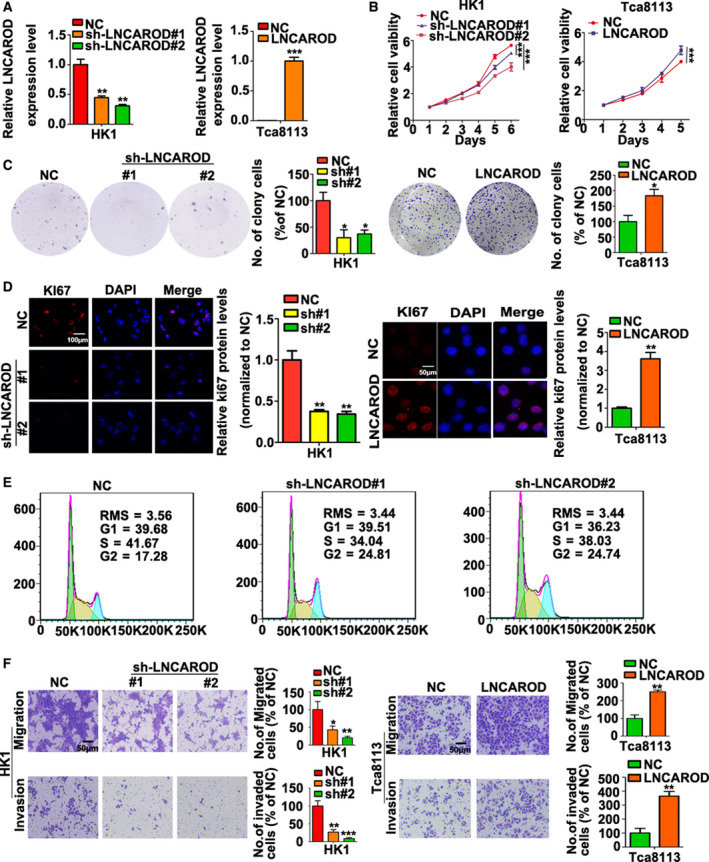Fig. 4.

LNCAROD promotes growth, mobility, and invasiveness of HNSCC cells. (A) LNCAROD levels in stable silenced or stable transfected cells were determined by RT‐PCR assays (n = 3 per group. Data were analyzed using Student's t‐test). (B) CCK‐8 assays indicated that stable silencing LNCAROD suppressed HK1 cell proliferation, whereas overexpression of LNCAROD accelerated cell proliferation of Tca8113 cell (n = 5 per group. Data were analyzed using two‐way ANOVA). (C) Colony formation assays demonstrated that silencing LNCAROD enhanced colony formation ability in HK1 cell, whereas ectopic LNCAROD exerted opposite effect in Tca8113 cell (n = 3 per group. Data were analyzed using Student's t‐test). (D) Immunofluorescence assays indicated that loss of LNCAROD reduced Ki‐67+ cell frequency in HK1 cell, whereas overexpression of LNCAROD exerted opposite effect in Tca8113 cell (n = 3 per group. Data were analyzed using Student's t‐test). (E) Flow cytometry assays suggested stable silencing LNCAROD induced cell cycle arrested at G2/M phase in HK1 cell. (F) Migration and invasion assays performed by using transwell inserts suggested that high expression of LNCAROD promotes migration and invasiveness of HNSCC cells in vitro (n = 3 per group. Data were analyzed using Student's t‐test). All data are mean ± SD. *P < 0.05, **P < 0.01, ***P < 0.001.
